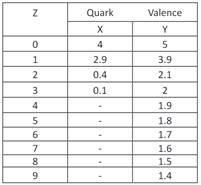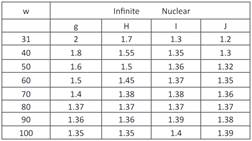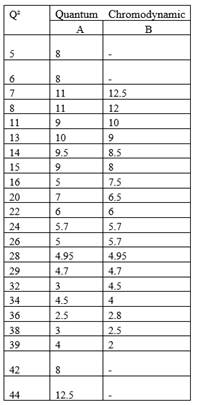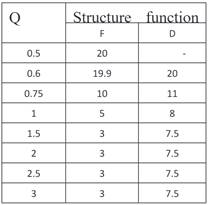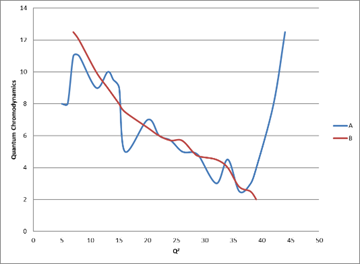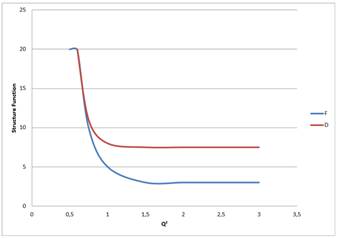INTRODUCCIÓN
Inelastic scattering is a fundamental scattering process in which the kinetic energy of an incident particle is not conserved. In contrast to elastic scattering some of the incident particle energy is lost or increased 1. The principle of inelastic collision in dynamics is quite distinct; inelastic collision in dynamics refers to processes in which the total macroscopic kinetic energy is not conserved 2. Scattering due to inelastic collisions will be inelastic but elastic collisions often transfer kinetic energy between particles. As in Compton, scattering due to elastic collisions can also be inelastic 3.
The inelastic scattering probability that depends on the incident electron energy is usually smaller than the elastic scattering one 4. In regard to gas electron diffraction (GED), reflection high-energy electron diffraction (RHEED), and transmission electron diffraction 5. The incident electron energy is high, and the contribution of inelastic electron scattering can be ignored 6. Deep inelastic scattering of electrons from protons provided the first direct evidence of quark existence 7.
Raman scattering, also known as inelastic scattering due to a photon being the incident particle 8. The incident photon interacts with matter and the photon frequency is shifted toward red or blue 9. A red shift can be observed when part of the photon energy is transferred to the interacting matter, where it adds to its internal energy through a process 10. The blue shift can be observed when the internal energy of the matter is transferred to the photon. The red and blue shift processes are known as Stokes and anti-stokes Raman Scattering respectively 11.
Inelastic scattering is the interaction between an electron and a photon. A high-energy photon collides with a free electron and transfers energy 12. An electron with relativistic energy collides with an infrared or visible photon, the electron gives energy to the photon 13.
It is known that neutrons undergo many types of scattering, including both elastic and inelastic scattering. Whether elastic or inelastic scatter occurs depends on the neutron speed; fast, thermal, or somewhere in between 14. It also depends on the nucleus it strikes and its neutron cross-section 15. The neutron interacts with the nucleus and the system's kinetic energy changes in the inelastic scattering 16. It often activates the nucleus putting it into an excited unstable short-lived energy state which causes it to quickly emit some kind of radiation to bring it back down to a stable or ground state. Alpha, beta, gamma, and protons may be emitted 17. It is known in Nuclear Physics that scattered Particles are a type of nuclear reaction that can cause the nucleus to recoil in other directions 18).
II. MATERIALS AND METHOD
The cross-section has a four-momentum transfer squared function carried by the virtual photon and the Lorentz scalar product 19. For a quark to carry a fraction x of the nucleon momentum with  when probed with resolution
when probed with resolution 
This can be justified in quantum chromodynamics since anything can be justified in a theory that has not been solved (20). The successful prediction that the same quark distributions are given simply by the square averages of relevant quark changes (21).
An integral which measures the excess of fermions over antifermions in the nucleon should be equal to three (22). Finally, the black box q(x μ²)) is the Fourier transform of the light cone correlation function C (Z μ²)) renormalized at μ² that is calculated in terms of α (μ²).
Explicitly,
Where
Is defined for a nucleon at rest, with
Where q (Z) and q(o) are quark field operations. The quark contribution reduces the equal-time correlation function of non-relativistic quantum mechanics (23). A familiar function is:
Where │A represents a nucleus at rest and Ψ is the nucleon field operator (24). The alternative representation as a displaced overlap function
Where Ψ is the one nucleon wave function, understanding that the correlation fraction measures the system size (25).
III. RESULTS AND DISCUSSION
Considering the Rayleigh-Schrödinger perturbation theory, the energy difference is:
Tends to zero as  with m and Q fixed. The only change in the formalism is that with nuclear target x is usually replaced by
with m and Q fixed. The only change in the formalism is that with nuclear target x is usually replaced by
Which can, in principle range from 0 to A. It is known that for  there are no sea quarks and therefore:
there are no sea quarks and therefore:
Thus  must have the form since the quark per nucleon is fixed:
must have the form since the quark per nucleon is fixed:
So  must be positive in some, if not all the regions x <0.3.
must be positive in some, if not all the regions x <0.3.
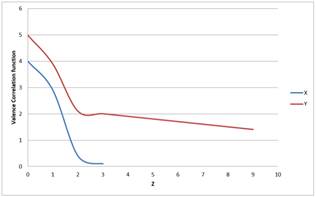
Figure 1: Z against the Valence Correlation Function (This Figure is plotted from results obtained in Table 1)
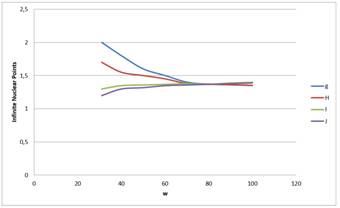
Figure 2: w against Infinite Nuclear Points (This Figure is plotted from results obtained in Table 2.)
Figure 1 shows that X and Y are parallel lines that move in opposite lines. Where x represents x > 0.1 and Y represents  . Also, Figure 4 indicates a valence correlation achieved for low energy parameters for the quark valence correlation. Proving that the long-range tail was assumed to acquit as
. Also, Figure 4 indicates a valence correlation achieved for low energy parameters for the quark valence correlation. Proving that the long-range tail was assumed to acquit as  that is returned by if this place is cut by a quiet calculation to the rootage which cutsx >> 0.1. The x >> 0.1 quark valence distribution is checked by distances < fm, the correlation function spilling for
that is returned by if this place is cut by a quiet calculation to the rootage which cutsx >> 0.1. The x >> 0.1 quark valence distribution is checked by distances < fm, the correlation function spilling for  and necessary unaltered deportment which obtains the lower curve. The figure is the product of Table 1.
and necessary unaltered deportment which obtains the lower curve. The figure is the product of Table 1.
Figure 2 shows that g, H, I and J have a meeting point which is at 80 on the w axis. It started at a parallel point that meets the point. Also, the figure indicates infinite nuclear matter so again it is entirely unreliable for  . It leads to no report of finite size effects and an effort was made to prove the fact that response takes place theoretically. The figure is plotted from the results obtained in Table 2.
. It leads to no report of finite size effects and an effort was made to prove the fact that response takes place theoretically. The figure is plotted from the results obtained in Table 2.
Figure 3 shows that line A forms a zigzag line which makes it like the letters m and w. While line B indicates a slight slope also similar to the letter m. A represents the equation  and B represents the equation
and B represents the equation  . This also indicates that there are errors that quantitatively work within. If
. This also indicates that there are errors that quantitatively work within. If  is chosen to be little, then
is chosen to be little, then  that is needed also becomes little. The little value stated in Quantum Chromodynamics signifies that
that is needed also becomes little. The little value stated in Quantum Chromodynamics signifies that  is nearly 5%. The figure is the product of Table 3.
is nearly 5%. The figure is the product of Table 3.
Figure 4 shows F and D lines starting at a point where a slope from 13 points on the structure-function that are separated from each other. Point 13 indicates that D has a higher structure function than F. D represents Deuterium on the structure function and F represents Fe. Also, the figure indicates the success of the scaling law that is in relation to the deuterium structure-function The heavier can be understood in terms of qualifying the properties of individual nucleons. It is coherent to write the X>0.3 region in terms of individual nucleon donation since it is restrained by lesser distances. The figure is plotted from the results obtained in Table 4.
IV. CONCLUSIONS
In nuclei, the quarks correlation functions have a large range. Regarding the origin of the nuclear effect, there is no consensus. When the dust settles, there will be an enhancement at low x, although it may be closer to the bottom than the top. Pion indicates a natural qualitative view of this enhancement. Based on pre-existing nuclear theory without any additional ingredients. However, pions are only effective degrees of freedom, and an inelastic model will not work with a high degree of accuracy. This effect is due to the properties modification of nucleons that are stretched in the nucleus. Structure functions have been understood for individual nucleons. Finite size effects were theoretically proven.





























